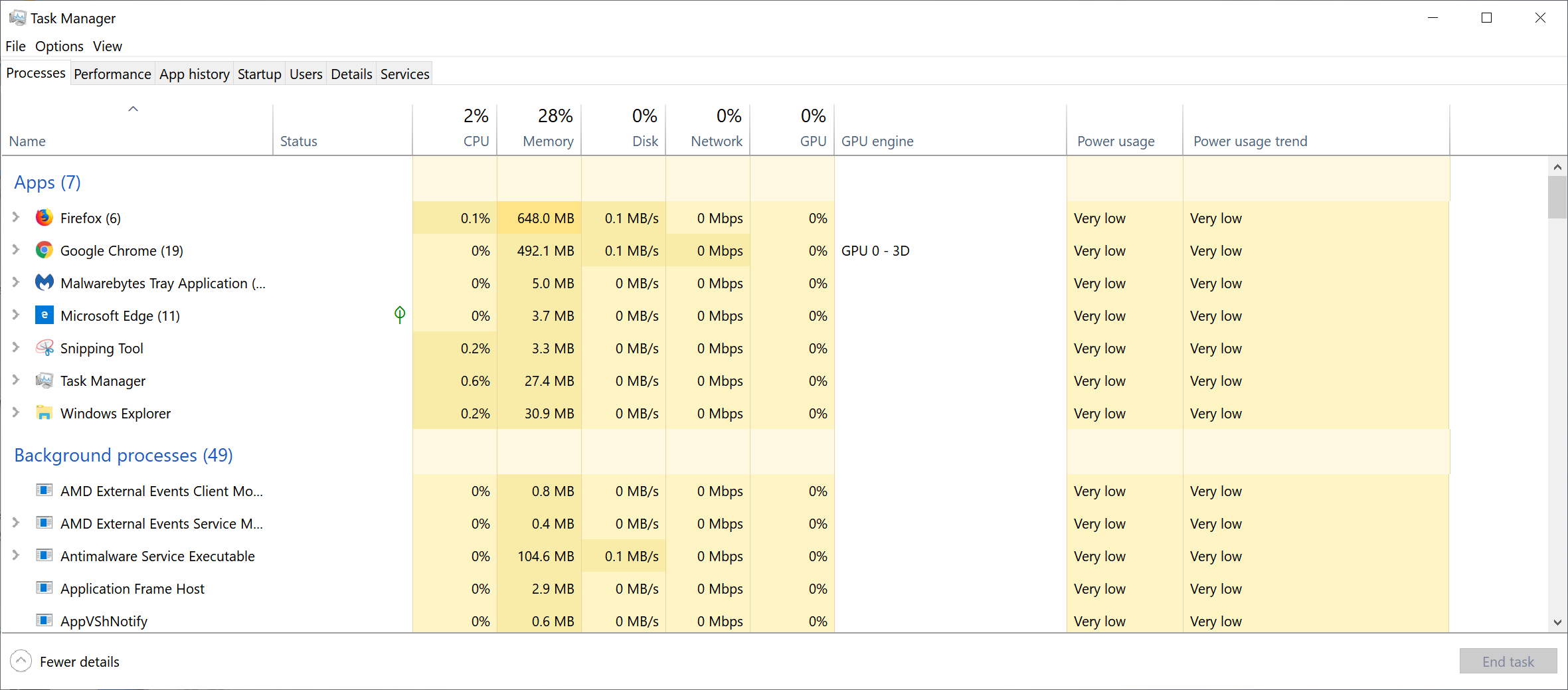This is an old revision of the document!
Table of Contents
Slow PC
This page is going to be a “work in progress” for a while. Why? Analysis of a Slow PC can expose more than one contributor to a slow PC. Using Windows Task Manager is usually an important part of analysis
HD (Hard Drive) or SSD (Solid State Drive) and Slow PC
For many years PC's were delivered with a Hard Drive. The electrical mechanical components in a HD contribute significantly, to the slowness of booting, loading a program and updates. In recent years computers are available with SSD. SSD is dramatically faster than HD. Computers with a HD can exhibit siginficant improvements in, booting, loading a program and updates, if the HD is replaced with an SSD. SSD costs have dropped significantly. If your computer is slow, an SSD upgrade will be easier on you bank account than a new computer. Today (June 4, 2019) a 250gb SSD could be purchased for less than $60. It is not unusual for a new PC or laptop to exceed $400.
Tell Task Manager to sort on CPU or Disk
Clicking on the CPU column will sort the columns based on CPU utilization. The process using the most CPU resource will be at the top of the list. Clicking on the column again will reverse the sort order.
Clicking on the Disk column will sort the columns based on Disk utilization. The Process using the most Disk resource will be at the top of the list. Clicking on the column again will reverse the sort order.
References:
Do a google search for: “troubleshooting with task manager”.
An alternative to Windows Task Manager is Sysinternals Process Explorer. Process Explorer has additional features. The Sysinternals Process Monitor utility is a more powerful tool for analyzing “why does my computer boot so slow?”. The Task Manager also has a tab that shows startup programs and it allows you to disable or enable the startup programs.
How do you invoke the Task Manger?
Here are 4 options for starting the Task Manager.
- Right-click the Taskbar and click on Task Manager.
- Open Start, do a search for Task Manager and click the result.
- Use the Ctrl + Shift + Esc keyboard shortcut.
- Use the Ctrl + Alt + Del keyboard shortcut and click on Task Manager.
Now What?
You should see something like this:

Make sure the “Process” tab is selected. Now you should see columns for CPU, Memory, Disk and Network. If the system is SLOW then one of those columns probably indicate something close to 100%. A system that is not exhibiting slow behaviour, usually indicates values below 10% for CPU and DISK. It is not uncommon for just a couple of programs to be contributing to high utilization of CPU or Disk.
Tell Task Manager to sort on CPU or Disk
Clicking on the CPU column will sort the columns based on CPU utilization. The process using the most CPU resource will be at the top of the list. Clicking on the column again will reverse the sort order.
Clicking on the Disk column will sort the columns based on Disk utilization. The Process using the most Disk resource will be at the top of the list. Clicking on the column again will reverse the sort order.
References:
Do a google search for: “troubleshooting with task manager”.
An alternative to Windows Task Manager is Sysinternals Process Explorer. Process Explorer has additional features. The Sysinternals Process Monitor utility is a more powerful tool for analyzing “why does my computer boot so slow?”.

Discussion